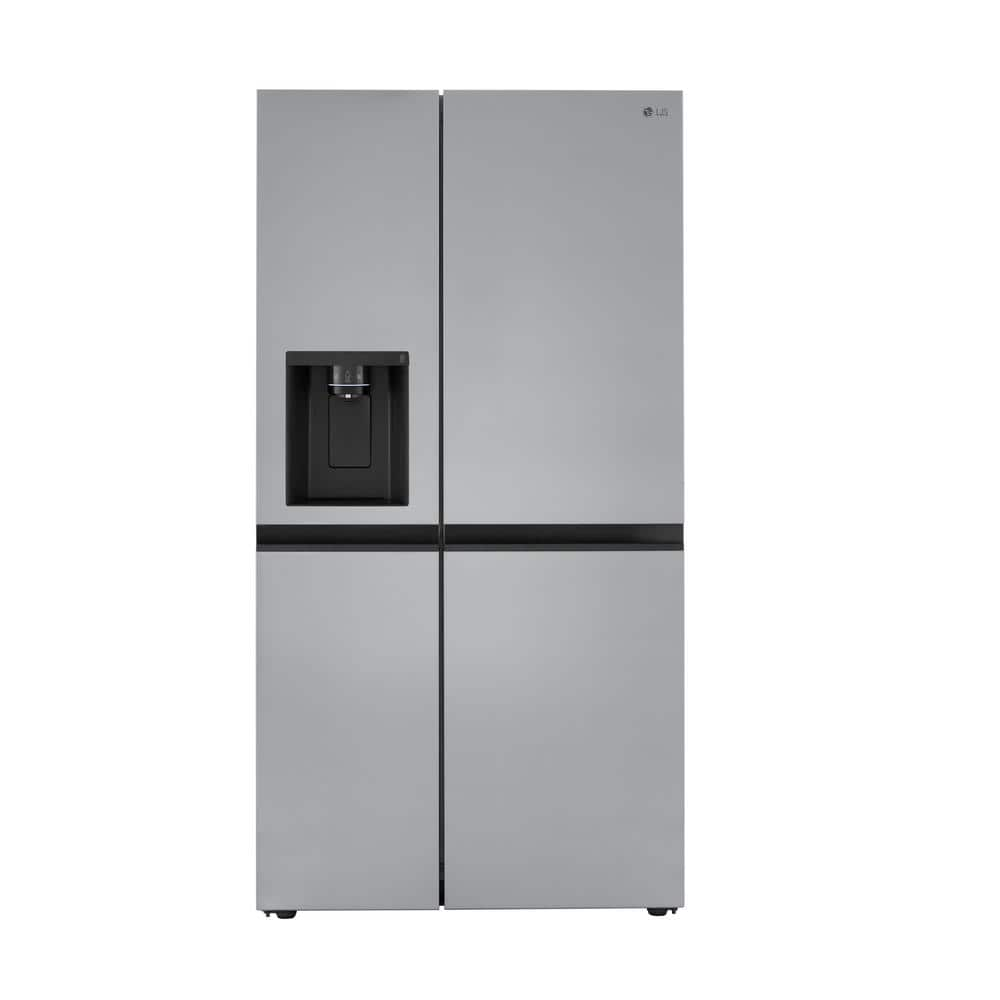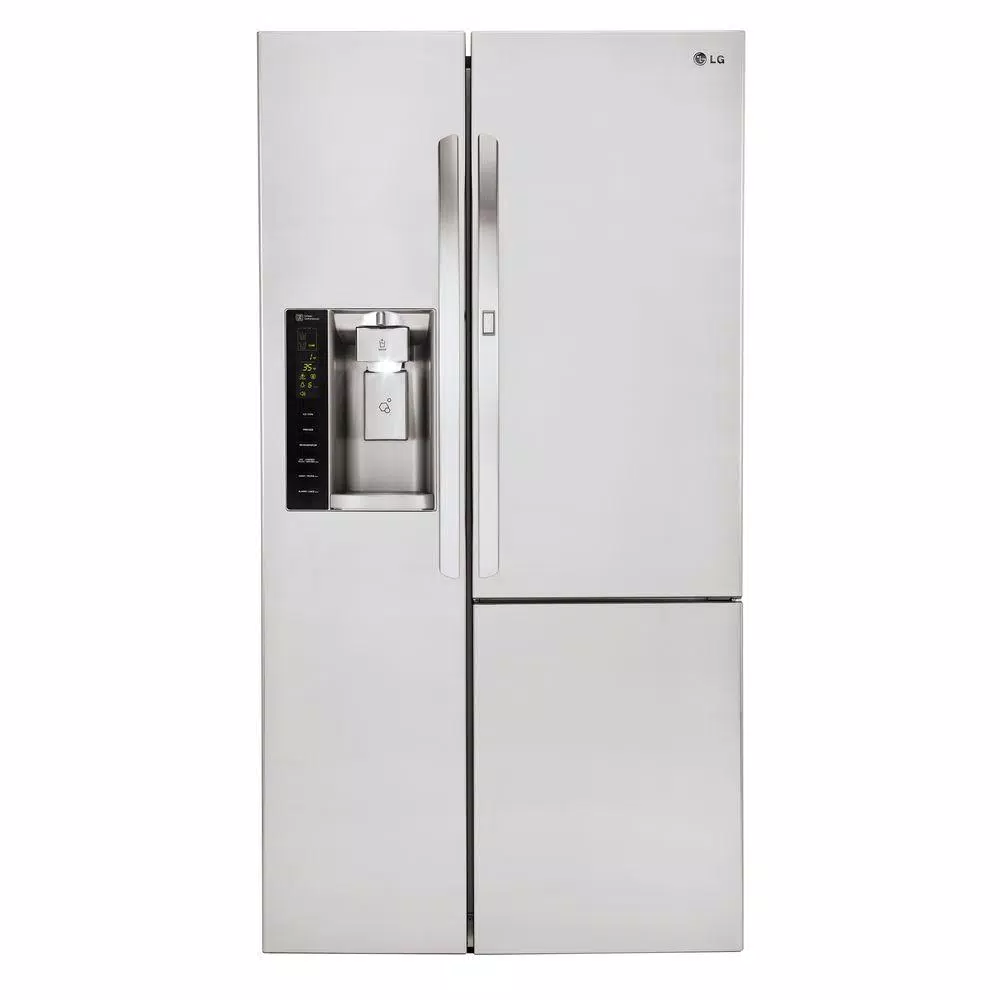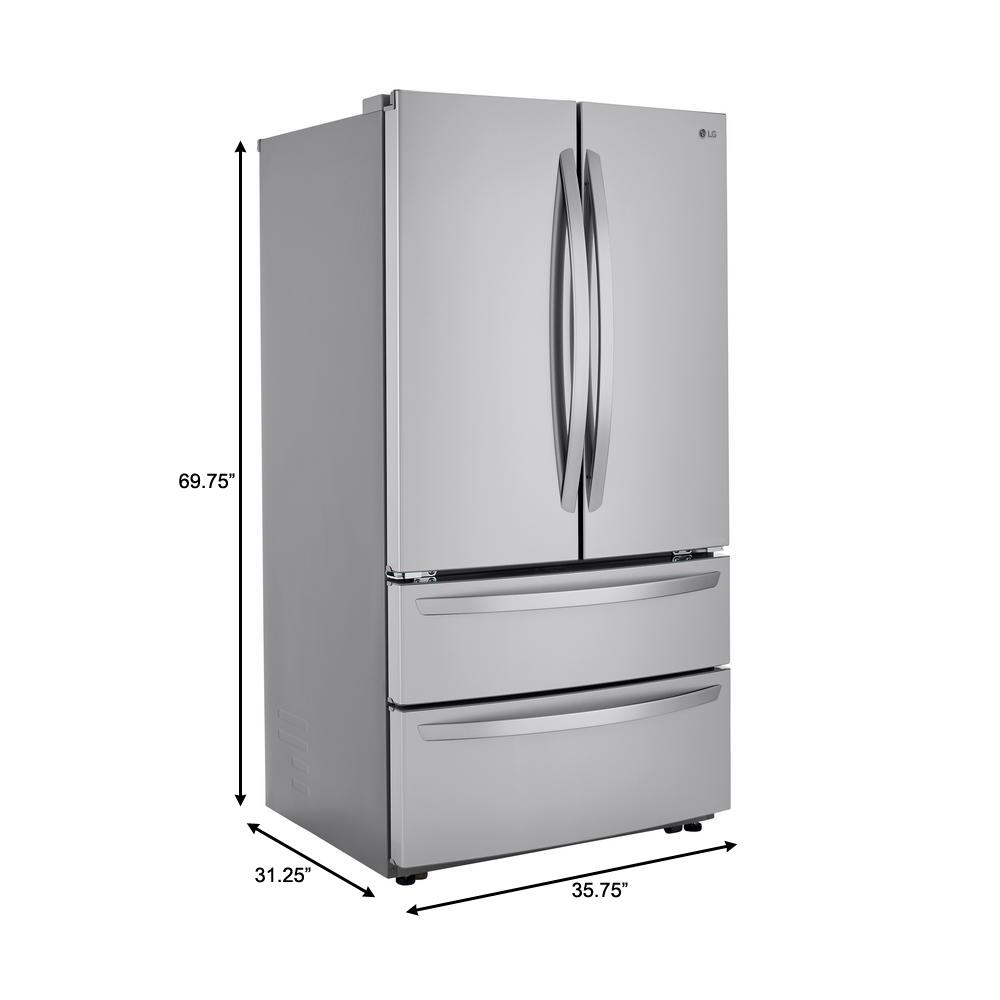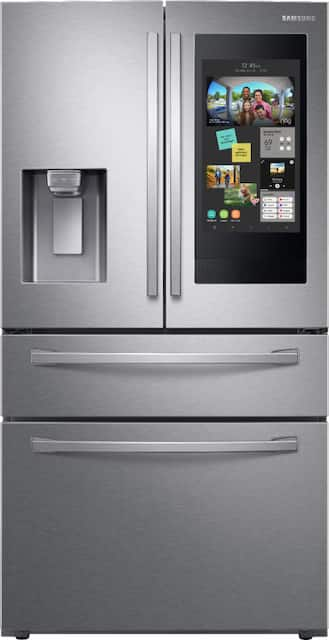LG Electronics 27 cu. ft. Side by Side Refrigerator with External Ice and Water Dispenser in Print Proof Stainless Steel
Smooth Touch Ice Dispenser. Sleek, flat-panel design with pocket handles. Door Cooling+ and SpacePlus Ice Maker.
It’s easy to show off your best side with our redesigned side-by-side refrigerator. The modern exterior includes flat panels, discreet pocket handles and sleek touch controls – all of which speak to your stylish side. For your organized side, there’s top-to-bottom shelving that keeps fresh and frozen foods in easy sight and with easy access. Stock up for the week and store it all in the generous 27 cu. ft. of space.
- Go ahead and stock up – not only does this refrigerator offer a generous 27 cu. ft. of space, but the vertical door design also offers equal access to fresh and frozen foods; keep items of all sizes where they’re easy to see and reach
- Take another glimpse every time you walk by this fresh design from LG and take in the contemporary vibe; flat panels are enhanced with discreet pocket handles that offer easy access
- Get all the ice you need without sacrificing shelf space; LG’s innovative slim, in-door design frees up freezer shelf space so you can use every inch for storage while still enjoying easy access to ice when you need it
- Now you can have all of the things you love about stainless, without the need for special cleaners or constant attention; LG’s PrintProof fingerprint and smudge resistant finish easily wipes clean with a soft, dry cloth for a distinctive kitchen that handles real-life in style
- Dispense everything from chilled filtered water to filtered cubed or crushed ice with just a light touch; the stainless design is both beautiful and practical, with a PrintProof finish that resists smudges and fingerprints
- Now you see them, now you don’t – we moved the refrigerator and freezer temperature controls to the inside of the fridge section to keep the exterior pristine while still keeping the controls close at hand
- Located in the top of the fresh food section, the door cooling and vent extends the reach of LG’s smart cooling system; blasts of cool air reach all areas of the refrigerator, including the door to help maintain consistent temperatures from top to bottom
- You go all out when it comes to choosing fresh foods for your family; LG linear cooling helps you keep them that way; the linear compressor reacts quickly to maintain temperatures within 1°F of the setting, to keep produce fresher and help preserve all foods as fresh and flavorful
- LG’s new pharmaceutical water filter, NSF certified to reduce more contaminants than our previous filters, for freshness you can taste
- Positively impact your energy bill, energy consumption and the environment with this refrigerator that meets the new Department of Energy standards
- Inverter Linear Compressor is backed by a 10-year limited warranty
- Door alarm alerts you if the doors are left open to help avoid costly food spoilage
- 2-Door Side-By-Side Refrigerator has the fridge compartment on the right and the freezer compartment on the left
Additional information
| Depth (Excluding Handles) | 33.44 in |
|---|---|
| Depth (Including Handles) | 33.44 in |
| Depth (Less Door) | 29.13 in |
| Depth With Door Open 90 Degrees (In) | 51.13 in. |
| Height to Top of Door Hinge (in.) | 70.25 in. |
| Height to Top of Refrigerator (in.) | 69.38 in. |
| Product Depth x Height x Width (in.) | 33.44 x 70.25 x 35.88 |
| Refrigerator Width (In.) | 35.88 |
| Certifications and Listings | ADA Compliant,UL Listed |
| Manufacturer Warranty | 1 Year Parts and Labor, 5 Years on the Sealed System & Compressor (Parts & Labor), 6-10 Years Linear/Inverter Compressor (Parts Only) |






by Mike
Enough room for all your groceries, water dispenser simple to use, sleek doors with handles concealed in the black area, which looks like 4 doors but its a traditional side by side awesome
by Jay
This is a replacement for a Kitchenaid and so far I found that every bad review I saw on this unit seem to be wrong. The two issue I saw when reading the reviews was the light and ice maker. The ice maker is keeping up with my family very well. The light in the unit is ok and I seem to be able to see everything I need too. The only fault I could find with it is how you switch back and forth with ice and water. When you go to cube then want to go back to water you have to go through the crush then water. However I can live with this. Seem to be a good buy for the price. Check back in a year and we will see how it is working.
by Tracie
So far so good! User friendly & ice Maker unit on door is much better! Better freezer storage use!
by Vivian
I have had it 4 weeks and I think it does a great job. Like now!
by Taco
The fridge and freezer are spacious inside, but the quantity and placement of shelves and drawers renders much of this space useless.
by Foster
Really great fridge, but I would prefer adjustable shelves and more lighting.
by Judy
The LG is great, everything works as should and get a lot of compliments how nice it is.
by Randall
We’re pretty happy with our new fridge, except for the fact that the rubber around the freezer section is not sealing correctly. We already had someone come out just waiting on new rubber sealer.